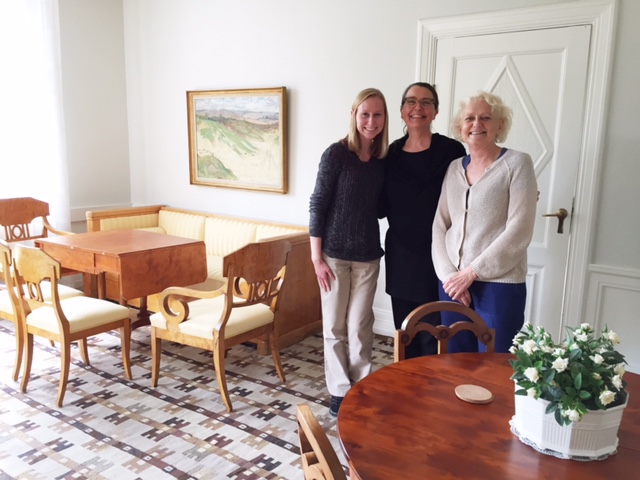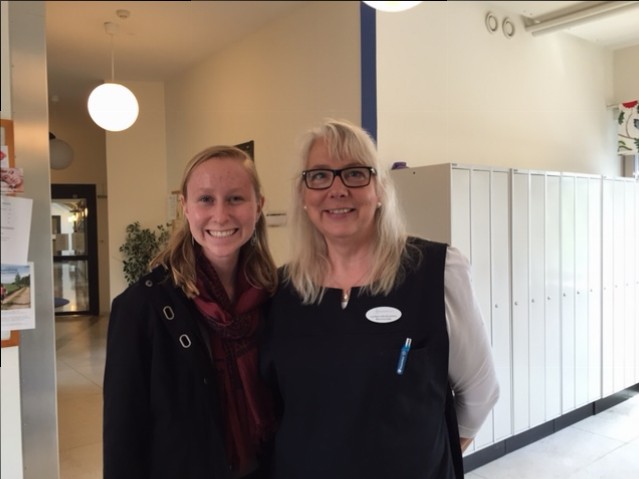This summer I received a grant through the Circumnavigators Club Foundation to travel to 6 countries to pursue my own thesis research. I have always been captivated by childbirth and midwifery, and I am passionate about global maternal health. Over three months I travelled to Netherlands, Sweden, Rwanda, Bangladesh, Australia, and Guatemala to interview over 70 midwives about their roles in the community, and compare their stories across the countries.
The past year of interning at Arizona Family Health Partnership, provided me amazing perspective on the importance of reproductive life planning for individual’s health and flourishing. After my travels I have seen powerful examples of individuals working to provide women and families with quality, respectful care from pre-conception to welcoming a new member into the family.
I have been interested in midwifery care for many years, as I have learned about the industrialization of birth that leads to increased unnecessary interventions and impersonal care. Global movements to reduce maternal and infant mortality unanimously include the professionalization, training, and employment of midwives in healthcare systems. In the United States, the midwifery profession has often been stigmatized and convoluted, but in first world countries around the world, midwives often provide the majority of care for normal pregnancies. Through my travels I questioned the United States’ model for reproductive care, and I had the opportunity to discover radically different ways that healthcare professionals can serve women and families – through midwives.
Sweden has had professional midwives as part of their maternal health system 300 years, which is the longest of any developed country. Through centuries of political negotiations and excellent nursing training, midwives have established responsibility for all normal childbirth in a hospital setting. This system works best when midwives and obstetricians work collaboratively to provide optimal care to women. The strength of Swedish midwives has been derived from their organization in the Swedish Association of Midwives, global influence in connection with the International Confederation of Midwives, WHO, and UNFPA, and by midwives’ professional contributions to research. I have met many midwives with PhDs who sit on medical boards and develop protocols for delivery care along with obstetricians. Sweden’s organization of the midwifery profession has been a model for countries all around the world. In Stockholm, I called up the Swedish Association of Midwives just to see if I could potentially talk with someone. Although it was last minute, they welcomed me to come in – and the secretary of the association spent 2 hours talking with me about their history and current issues in focus.

At the Swedish Association of Midwife headquarters
I interviewed several midwives outside of Stockholm who work primarily in the youth clinics. In Sweden, all youth have access to free reproductive health care and counselling. I visited a youth clinic and learned about the services they provide.
Midwife Ing-Marie explained to me the different methods of birth control provided to individuals based on their needs. She told me that both male and female adolescents make appointments at the clinic after they learn about the services in schools.
When I asked her about barriers to care, she told me that around age 23 rates of pregnancy spike. After age 23, people aren’t allowed to receive care at the youth clinic, so there can be gaps in care where people don’t know which preconception provider to see. To address this gap, Sweden is emphasizing the benefits of long-acting birth control. “When people are young they want to study and journey,” Ing-Marie told me. “They’re not ready to have children.”
I asked why Ing-Marie chose to become a midwife. “You have it all,” she said. “Good team, we share experience, love young people, be in the lives of young men and women growing up. We help them believe ‘I am something.’”

Ing-Marie the youth clinic midwife
A midwife who has worked in practice, research, teaching, and with the WHO in Geneva told me that Sweden has two especially important messages to contribute to global midwifery: The first, that midwives want to and should have the competence to broaden their scope of work to the comprehensive reproductive and sexual healthcare realm. The second, that midwives are not the second best solution for the healthcare of healthy, normal pregnancy and childbirth – they are the best option. The second best option is when countries abandon midwifery as they become more advanced. Midwives work with women to keep birth normal as long as possible through avoiding medicalization and intervention. She told me that other countries say to Sweden “you are a rich country, how do you still have midwives?” In response, Sweden realizes they need to continue to repeat the message that a country doesn’t have midwives just because they can’t afford doctors – a country has midwives because they can afford to invest in midwifery care for all women.
In Sweden, not only do midwives care for women during their pregnancies and childbirth, but they care for society through providing excellent care to men and women throughout their reproductive lives. As the United States looks to new ways to provide quality, compassionate, and comprehensive care to women, I hope that we consider the model Swedish midwifery has created to meet the needs of all people.
– Annie, Intern at Arizona Family Health Partnership










